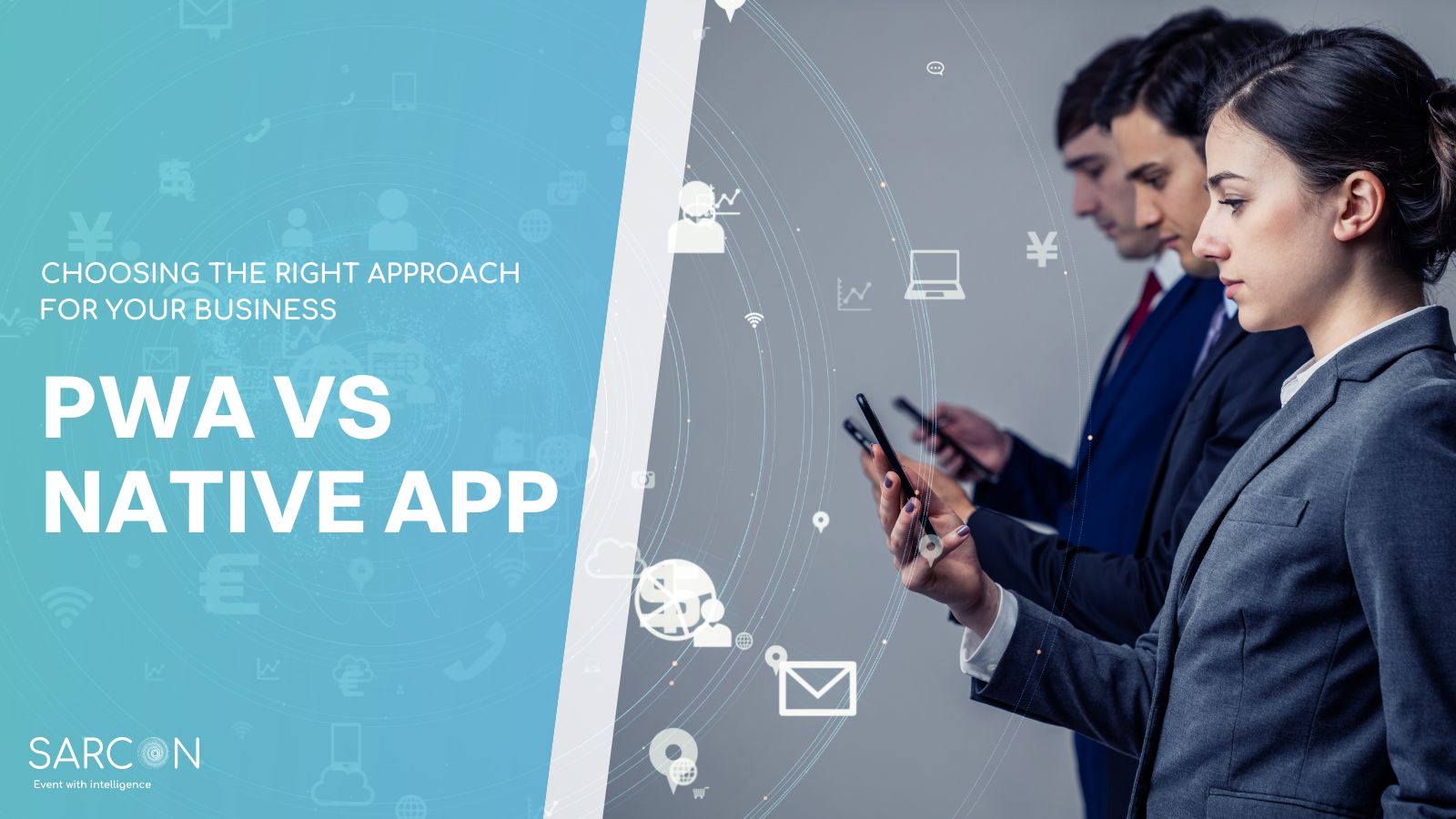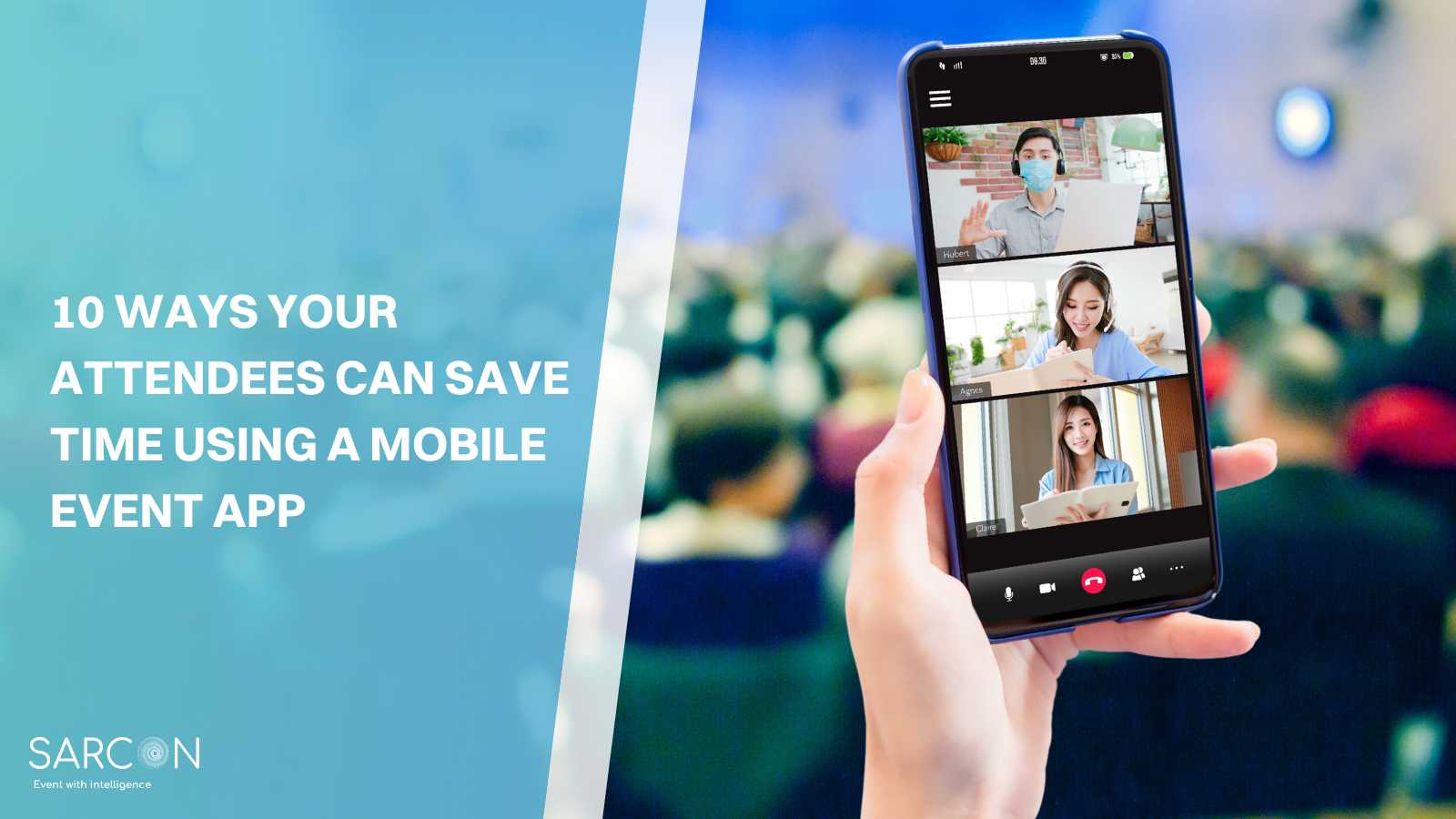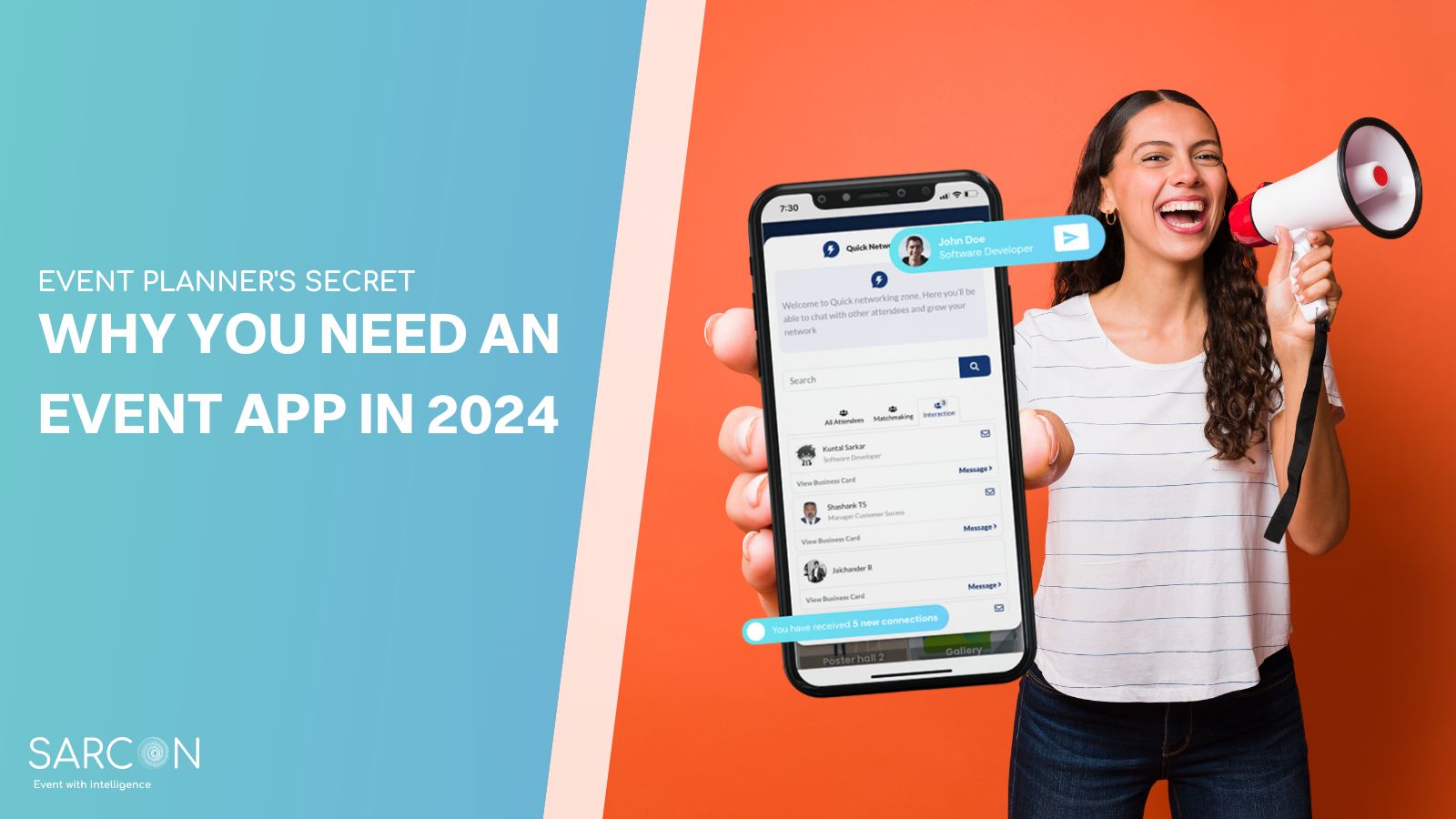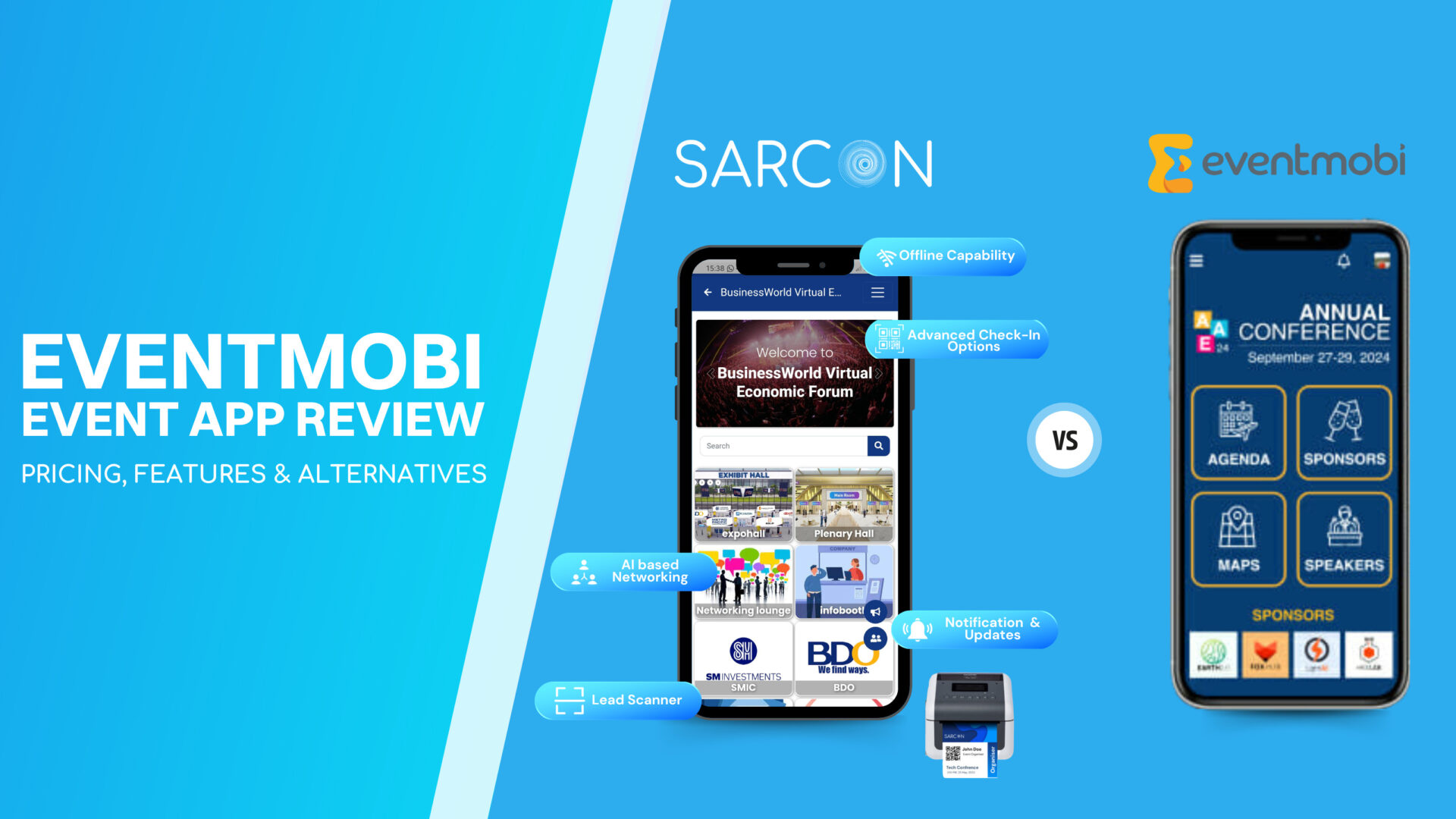From traditional physical gatherings to immersive virtual experiences, event organizers are harnessing the power of technology to enhance accessibility, engagement, and interactivity. With the ubiquity of mobile devices, the imperative for event organizers is to craft mobile applications that empower attendees to seamlessly access event details, register for upcoming occasions, and foster connections with fellow participants.
Enter the debate of the hour: Progressive Web Apps (PWA) versus Native Apps. The choice between these two popular technologies can significantly impact the success of your event management. In this comprehensive exploration, we’ll dissect the distinctions between PWAs and Native Apps, unravel the unique advantages and drawbacks of each, and equip you with the insights needed to make the right technological choice for your event.
What are Progressive Web Apps (PWA)?
Progressive Web Apps (PWA) are web-based applications that provide users with an app-like experience on their mobile devices. PWAs can be accessed through a web browser and do not require installation from an app store. PWAs use modern web technologies such as HTML, CSS, and JavaScript to provide an immersive and fast user experience.
Advantages of PWA for Event Organisers
-
User Experience :
PWAs offer an app-like experience that is fast, reliable, and engaging. PWAs use modern web technologies such as Service Workers to enable offline access to content, push notifications to engage users, and smooth animations to provide an immersive experience.
-
Speed:
PWAs are designed to load quickly, even on slow network connections. PWAs use techniques such as caching and prefetching to reduce loading times, making them ideal for users who are on the go and have limited connectivity.
-
Discoverability:
PWAs can be accessed through a web browser, making them easily discoverable through search engines. This means that users can find and access your event app without the need to download an app from an app store.
-
Cross-Platform Compatibility :
PWAs can be accessed on any device with a modern web browser, including desktops, laptops, tablets, and mobile devices. This means that event organisers can develop a single app that works across all devices, saving time and development costs.
-
Cost-effectiveness:
PWAs can be developed using standard web development technologies, making them cost-effective to develop and maintain compared to Native Apps. PWAs do not require approval from app stores, which eliminates the need to pay app store fees and wait for approval.
What are Native Apps?
Native Apps are mobile applications that are developed specifically for a particular mobile platform, such as iOS or Android. Native Apps are downloaded and installed from an app store and provide users with an optimised experience for their mobile device.
Advantages of Native Apps for Event Organisers
-
Performance:
Native Apps are optimised for the specific mobile platform they are developed for, which means they can provide faster performance and smoother animations than PWAs. Native Apps can also provide access to native features such as the camera, GPS, and accelerometer.
-
Functionality:
Native Apps can provide access to a wide range of native features, such as push notifications, offline access to content, and integration with third-party services. This can enhance the functionality of the event app and provide a better user experience.
-
User Engagement:
Native Apps can provide users with a personalised experience that is tailored to their device and preferences. Native Apps can also provide access to social media platforms, enabling users to connect and engage with other attendees.
-
Security:
Native Apps are developed using platform-specific development languages, which can provide better security than PWAs. Native Apps can also provide access to device-level security features, such as biometric authentication.
Comparing PWA vs Native Apps for Event Management
When it comes to choosing between PWA and Native Apps for event management, there are several factors that event organizers need to consider. Let’s take a closer look at some of these factors:
-
User Experience :
When it comes to user experience, both PWA and Native Apps have their advantages. PWAs offer an app-like experience that is fast, reliable, and engaging. Native Apps, on the other hand, provide a more personalized and optimized experience that can enhance user engagement.
-
Development Cost:
Developing a PWA is generally more cost-effective than developing a Native App. PWAs can be developed using standard web development technologies, which are widely available and require less expertise than platform-specific development languages. In addition, PWAs do not require approval from app stores, which eliminates the need to pay app store fees and wait for approval.
-
Functionality:
If your event app requires access to specific device features such as the camera, GPS, or accelerometer, a Native App may be the better choice. Native Apps provide access to a wide range of native features that can enhance the functionality of the event app and provide a better user experience.
-
Offline Access:
PWAs are designed to work offline, which means that users can access content even when they are not connected to the internet. This is a significant advantage for users who are on the go and have limited connectivity. Native Apps can also provide offline access to content, but this feature requires additional development and can increase the cost of development.
-
Discoverability:
PWAs can be accessed through a web browser, making them easily discoverable through search engines. This means that users can find and access your event app without the need to download an app from an app store. Native Apps, on the other hand, require users to download and install the app from an app store, which can be a barrier to entry.
-
Updates and Maintenance:
Updating and maintaining a PWA is generally easier and less time-consuming than updating and maintaining a Native App. PWAs can be updated in real-time without the need for users to download and install updates. Native Apps, on the other hand, require users to download and install updates, which can be a time-consuming process.
Choosing Between PWA and Native App for Event Management
When it comes to choosing between PWA and Native App for event management, there is no one-size-fits-all solution. The decision ultimately depends on your specific requirements and budget. Here are some factors to consider when making your decision:
-
Budget :
If you have a limited budget, a PWA may be the better choice. PWAs are generally more cost-effective to develop and maintain than Native Apps, and they do not require approval from app stores, which eliminates the need to pay app store fees.
-
Functionality:
If your event app requires access to specific device features such as the camera, GPS, or accelerometer, a Native App may be the better choice. Native Apps provide access to a wide range of native features that can enhance the functionality of the event app and provide a better user experience.
-
User Experience:
If you want to provide an app-like experience that is fast, reliable, and engaging, a PWA may be the better choice. PWAs offer an app-like experience that is optimized for mobile devices and can be accessed through a web browser.
-
Offline Access:
If your event app requires offline access to content, a PWA may be the better choice. PWAs are designed to work offline, which means that users can access content even when they are not connected to the internet.
-
Discoverability:
If you want to make it easy for users to find and access your event app, a PWA may be the better choice. PWAs can be accessed through a web browser, which means that users can find and access your event app without the need to download an app from an app store.
-
Maintenance and Updates:
If you want to minimize the time and effort required to maintain and update your event app, a PWA may be the better choice. PWAs can be updated in real-time without the need for users to download and install updates. Native Apps, on the other hand, require users to download and install updates, which can be a time-consuming process.
Conclusion
In conclusion, the decision between PWA and Native App for event management depends on your specific requirements and budget. Both options have their advantages and disadvantages, and it is important to consider these factors before making a decision. PWAs are generally more cost-effective and easier to maintain, while Native Apps provide access to a wider range of native features and can provide a more personalized user experience. Ultimately, the decision comes down to what is best for your event and your attendees. By carefully considering your options and weighing the pros and cons, you can make an informed decision and create an event app that meets your needs and exceeds your attendees’ expectations.



